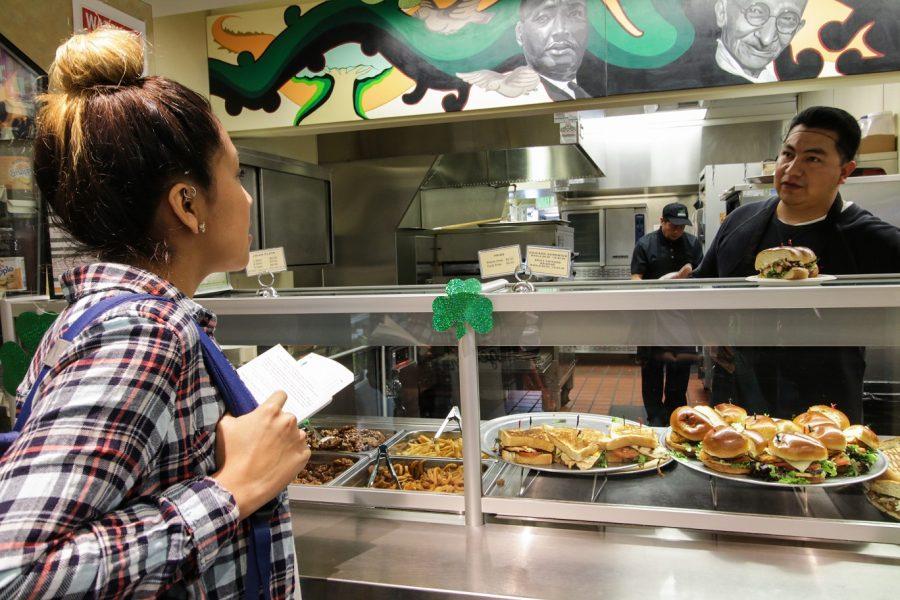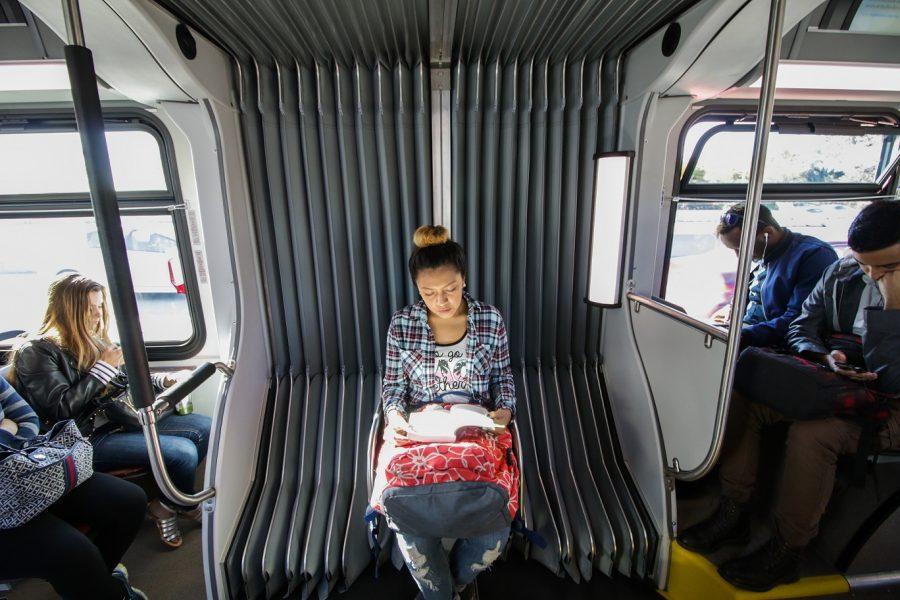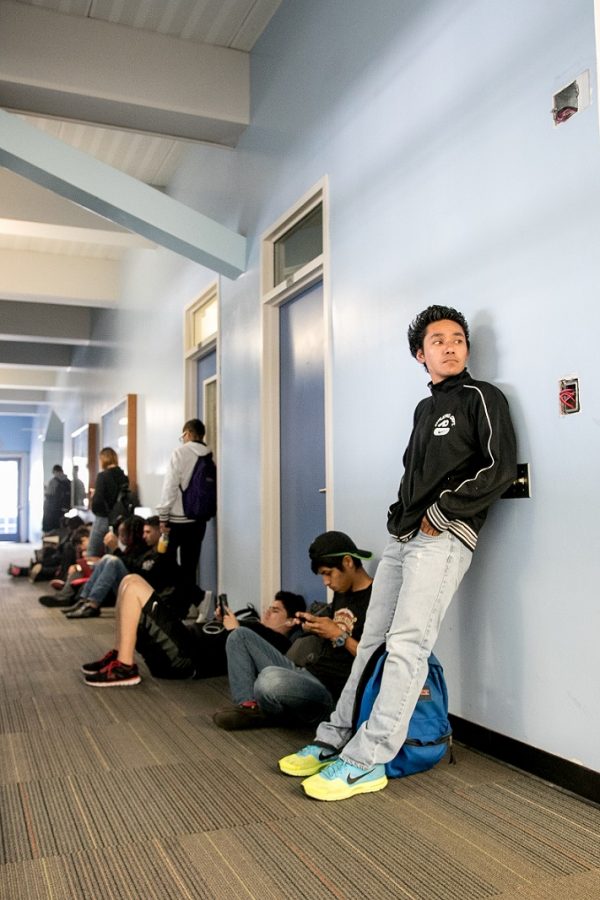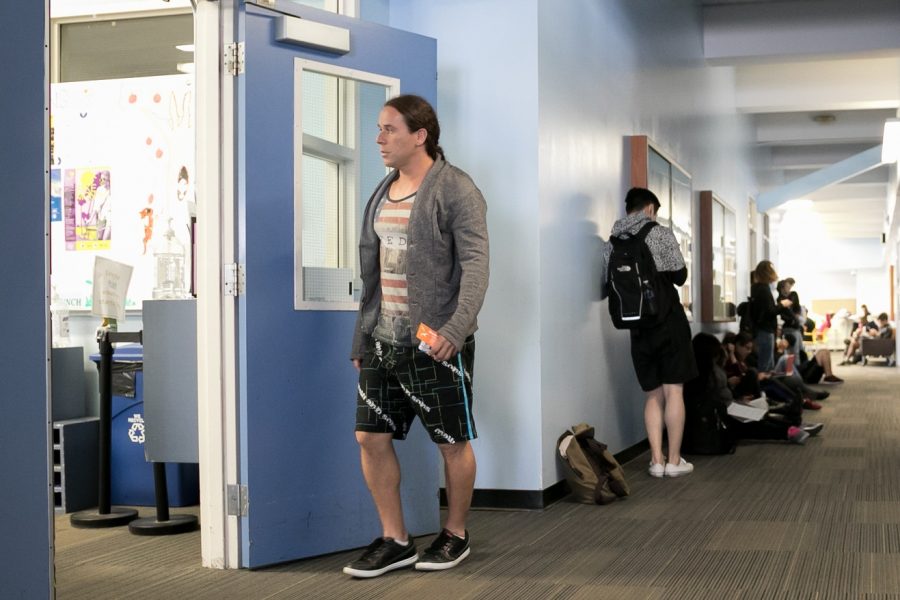FLVR Program chooses accessibility over accuracy

Brenda De Angel wakes up in her shared bedroom in downtown Los Angeles, throws on a pair of jeans and a flannel, puts her hair up in a messy bun and walks out of the door, probably similar to other Santa Monica College students. On her hour-long bus ride to school, the 18-year-old whips out the book “Just Mercy” by Brian Stevenson for an English class. Says De Angel about her packed morning ritual, “There’s just never enough time.”
Currently enrolled in 15 units, De Angel has devoted her entire life to school this year after seeing several friends end up in less than appealing situations. With her father losing his source of income after a recent work-related injury, her family has fallen on hard times. Stuck in these tough circumstances, De Angel had to get creative when it comes to self support.
One of the ways she's saving money is by using the newly founded Free Lunch Voucher (FLVR) program. Like many other students at SMC, De Angel lines up outside of the Associated Students (AS) office in the Cayton Center early each morning to wait for a $5 voucher so she can eat for the day.
“I’m so thankful for the program,” De Angel says, “I’ve told all of my friends about it and urged them to try it.”
For De Angel, the FLVR program is a saving grace. For the AS Board of Directors, it's an achievement. At the May 2 AS board meeting, Student Trustee Jonathan Eady told the board that at a recent conference for trustees, the program had gained SMC recognition from across the state.
For the rest of the SMC student body though, the FLVR program is still a relatively unknown measure from AS. What even fewer people know are the details of how the program functions, including potential flaws in the program's execution.
After an emergency meeting held on December 10, 2015, the FLVR program was approved by the AS board to begin in Spring 2016 with a budget of $31,600. A pilot program for a potentially permanent measure, FLVR was pitched to the AS board as an endeavor meant to help homeless and needy students with the most basic necessity of life: food. This is achieved by handing out up to 50 daily vouchers to students that can be redeemed in the school’s cafeteria for $5 worth of food. It's first come, first serve.
At $5 a voucher with a reserve of 1,000 vouchers for the Summer semester, the current AS budget allocation allows for 5,320 meals for the semester. There was an additional $5,000 approved for advertising of the program, according to the minutes of the AS meeting where the program was approved.
In order to qualify for the program, students only have to fulfill two requirements. First, a student has to fill out an application form where the student indicates their need for it which also collects demographic information that is being using to track the program's efficacy. Second, the student must wait in the now familiar line that stretches out of the AS office every morning in order to receive a voucher.
From the minutes of both the AS Finance Committee and board meetings where FLVR received approval, the language states that the vouchers are meant for "students demonstrating need." Importantly, there is no method for AS to track or verify any of the information that a student provides on their application, which is self-reported. Thus, truth or falsity of whether a student is successfully "demonstrating need" is entirely reliant on trust from AS of the students that apply.
The bulk of the work for organizing the FLVR program was done by Johnathon Hughes, the AS Director of Student Outreach. Hughes stated that his primary motivation for doggedly pursuing the program could be traced back to his childhood. After struggling with homelessness and poverty in his youth due to an absent father and drug addicted mother, Hughes said that he was an example of how someone could escape a cycle of poverty.
He said, “I feel like I’m an exception to the rule. I think I am [an example of] how people come out of [poverty] and the public's perception of people who are [poor] is wrong.”
In multiple interviews, Hughes stressed that a key concept of the FLVR program is to not only help those in need, but also to break a social stigma he feels exists surrounding homelessness. It's a stigma that he feels prevents potentially homeless students from taking the initiative to get the help they need. Hughes said, “Yes, anybody can come and use [FLVR]. If people who can support themselves are using it too, then there is no barrier or social stigma for those low income users.”
The result of this open-to-everyone policy is that everyone is using the FLVR program. Few of the students that have filed applications for FLVR vouchers have actually self-reported as being homeless.
According to records Hughes provided the Corsair, as of April 1, a total of 232 individual students enrolled in FLVR, many of whom have repeatedly received vouchers. Of those 232 students, 25 have self-reported as being homeless, with an additional five reporting that they were living out of their car. For a program originally meant to specifically target homeless students in need, as stated by Hughes himself, only 12 percent of the students using the program are self-reported as homeless. Again, this is contingent upon honest self-reporting from the applicants.
Part of the reason AS can't actually check the status of students' potential lies is school policy. On this issue, AS President Jesse Randel said that though every effort has been made to identify homeless students on campus, state and federal laws protecting the privacy of students, like the Family Educational Rights and Privacy Act (FERPA), have hampered the ability of AS to identify homeless students specifically without them offering this information themselves.
Randel said, "It is somewhat on the honor system. I will admit that. But that's because we have an inability to create the necessary infrastructure... we're not allowed to look that deeply into [students' lives]."
The other looming questions about FLVR lies in its potential longevity. With funding only provided for the current semester, Hughes and the rest of AS have been seeking a permanent method to keep the program funded outside of AS approving it every year with funds provided through AS member dues.
While searching for funding, Hughes met with Mike Tuitasi, Vice President of Student Affairs for Santa Monica College, to discuss funding and accountability. Hughes claims that Tuitasi “specifically said they’re not allowed to give money to students. It’s seen as a gift which they are barred from giving.”
This "gift" aspect is a primary reason the school, which relies on funding from the school district and thus the state of California, legally can not fund FLVR. California Government code section 8314 and the California constitution both specifically prevent public institutions like SMC from giving gifts of public funds, including through intermediary items like books or food, directly to individuals.
Tuitasi said, “The other part of it is making sure students are connected to the resources they need, to make sure that you're not just giving free money away... Based on the data from Financial, Aid there are only 140 students [at SMC] who identified as homeless, but they're not reaching out to those students. You don't even have to be an AS member."
After learning about FLVR, Lizzie Moore, the interim Dean of Institutional Advancement for SMC, offered assistance to Hughes in order to keep the program running after the end of the current semester.
“I thought, 'Wow, this is really great what they’re trying to do for students.'” said Moore.
Moore is working to set up a payroll deduction so that any staff members who wish to support FLVR can donate to it as private individuals, theoretically circumventing the "gift of public funds" problem. According to Moore, this charitable payroll deduction is still in the developing stages.
When asked about the lack of income qualification verification and the idea of breaking the stigma of poverty, Moore said, “Well how is [FLVR] breaking the stigma? I guess I don’t know how its ‘breaking the stigma’ because if you’re hungry you’re hungry. It doesn’t really matter what your status is.”
Others involved in assisting Hughes to find future funding have faith in Hughes and the students of SMC to make the right choice when it comes to how efficiently FLVR is monitored.
Tom Peters, the political director for the faculty association said, “I’m going to trust the directors of the AS to monitor it. If it needs monitoring, I think they should, but we just want to help.”
Pride in the current success of the program seems to be a consistent theme when the discussion of FLVR arises. In this case though, success seems to have been measured in the amount of people using the program, rather than whether it is hitting its targets efficiently, as usage of the program jumped from 0 to 263 students a week through the first seven weeks of the program.
And the program continues to grow. Recently, 20 extra vouchers per day have been set aside for specific students who claim to be most needy from their free form answers written on the application or who are aligned with other programs at SMC such as Extended Opportunity Programs and Services (EOPS).
Hughes said, “I’m hesitant to say exactly what those criteria are because we’re not asking for people to bring in or show us a picture of their homeless situation.”
Though he too is concerned about FLVR continuing past his term on the AS board, when asked about the success of the program Hughes said, “I think that everybody else [on AS] would find it to be way more successful than my personal views on it, but I think it’s been an amazing success.”
Randel agreed with Hughes as well saying, "Philosophically, I feel fine about this program...I would rather give food to more people, some of whom may not need it, than less people, and leave out some people who may need it. I would rather overdo it than under-do it. That's my philosophy."
Both Hughes and Randel stressed that they understood that while there may be flaws with the current execution of FLVR, including the potential for abuse, it should be remembered that it is a pilot program and is subject to change based on feedback from the SMC student body.
In the end, students like De Angel are certainly seeing a direct and much appreciated benefit from the FLVR program. Whether all the right people are receiving those benefits or whether they will continue to receive them next semester are questions that are still waiting to be answered.



